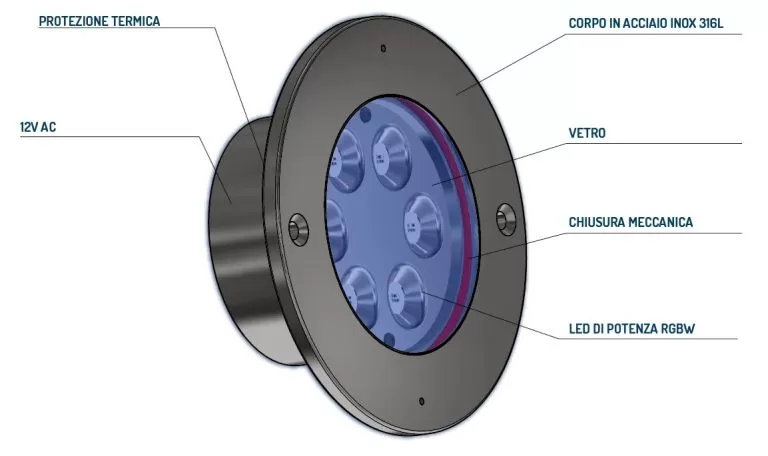
―
The components that make up a lamp are:
- Mechanical body: Generally circular in shape, this element houses the LEDs and, if necessary, the electronic circuits required for their control. Lamps are available on the market with bodies made of plastic, glass, or metallic materials such as bronze or, in most cases, AISI 316L steel (also known as marine steel).
- LED: Including the related control electronics, necessary for the emission of light.
- Power supply cable to the lamp: Typically, a neoprene cable is used, although there are more suitable cables on the market designed for permanent immersion, which are more resistant even when used in aggressive waters like thermal waters (an example is the PBSSPOT cable, similar to the cable used to power pool cleaners).